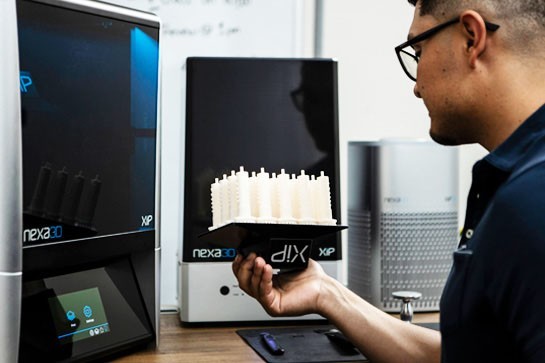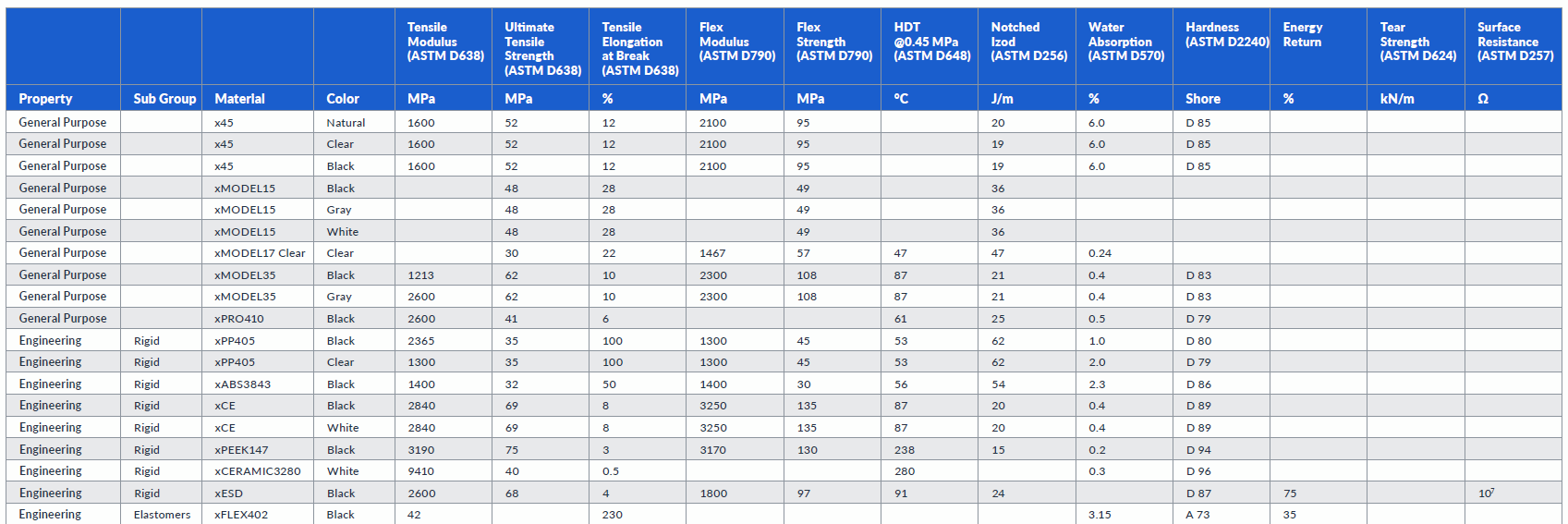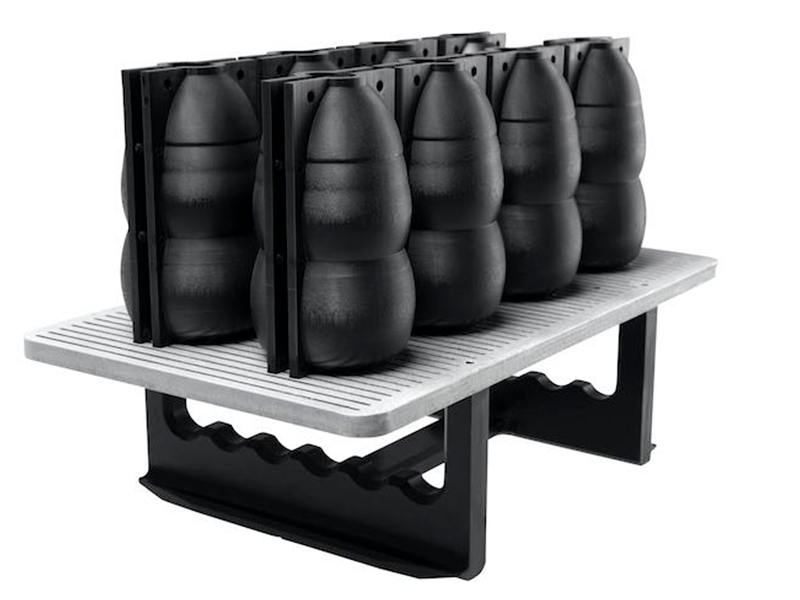
Resin 3D printing: technologies and limitations
Historically, resin 3D printing had two major limitations that acted as a barrier to entry in industrial applications. On the one hand, the limited availability of technical and functional materials considerably reduced the number of applications where resin had an advantage over FDM printing, and on the other hand, the reduced printing speed provided by SLA technology meant that its use in small production runs was not viable.
In recent years, the development of resin 3D printing has grown exponentially thanks, to a large extent, to the appearance of LED-LCD technology. This technology has led to the emergence of cheaper and considerably faster equipment thanks to the ability to expose the entire surface of each layer simultaneously.
The increased presence of resin 3D printing equipment in companies has in turn led some large manufacturers to focus their efforts on developing new functional and quality materials.
These two factors have made LED-LCD resin 3D printing a mature technology with great potential in multiple fields of industry.
LED/LCD and LSPc technology
LED-LCD technology consists of displaying complete layers using an LED matrix capable of providing homogeneous illumination in conjunction with a monochromatic LCD panel that serves as a mask by selective pixel aperture, which has led to the technology also being referred to as masked SLA (mSLA).
Video 1: How SLA, DLP and LED-LCD technologies work. Source: SprintRay.
The ability to expose an entire layer simultaneously means that it can be cured in just a few seconds and also that the printing time depends only on the build height and not on the number of parts. This makes it very competitive with SLA technology, where times increase considerably not only depending on the build height, but also on the number of parts and their size.
However, until now, both SLA and LED-LCD technologies had a common limitation: the transition between layers required low-speed movements to lift the part out of the tank. This meant that in many cases the transition times between layers were longer than the exposure times.
Nexa3D's patented LSPc technology implemented in the XiP printer has changed this paradigm by enabling continuous printing with minimal transition times between layers and breaking the speed barrier that existed until now in LED-LCD and SLA technologies.

Image 1: Components of Nexa 3D's LSPc technology. Source: Nexa3D.
This technology is based on the use of a self-lubricating membrane that enables virtually instantaneous layer changes, providing print speeds up to 40 times faster than those provided by SLA printers in the same segment.
Video 2: Real-time demonstration of Nexa3D LSPc technology. Source: Nexa3D.
In addition, Nexa3D's LSPc membranes offer higher transmittance and near-zero refraction compared to traditionally used FEPs, which together with a highly homogeneous LED array and a high-resolution LCD panel, allow higher resolutions than those provided by SLA technology and similar accuracies to be achieved.
Availability of technical and functional materials
The emergence of new manufacturers and the development of new technical and functional resins has meant that any resin 3D printer intended for professional use should ideally meet two requirements: The availability of correctly parameterised and optimised quality technical and functional materials, as well as making it possible to use new materials or alternatives from other manufacturers.
Nexa3D has covered these two requirements by enabling the use of open parameters in its 3D printers and by creating a complete ecosystem that includes high quality functional materials produced by some of the most reputable manufacturers such as BASF or Henkel.

Image 2: Comparison of Nexa3D technical materials. Source: Nexa3D.
XiP currently includes an expanding portfolio of more than 20 different materials including general purpose materials, functional materials and dental materials.
General purpose materials include xModel15 and xModel35, which are intended for the production of models requiring excellent finish and high dimensional stability.
Video 3: High precision printing with xModel15. Source: Nexa3D.
The range of functional resins includes multiple material options to cover the most demanding industrial applications such as xPEEK147, a material with a tensile and flexural modulus of more than 3 GPa and a softening temperature of over 200°C.

Image 3: Injection moulds made of xPEEK147 resin. Source: Nexa3D.
Other materials are also available that serve as alternatives to those used in other 3D printing technologies more common in the industry, such as xPP405, or xABS3843, alternatives to PP and ABS respectively.

Image 4: Functional automotive component produced with xABS3843. Source: Nexa3D.
Finally, flexible materials with elongations at break of up to 159 %, such as xFLEX402 or xFLEX475, are also available.
The perfect match for industry
The Nexa3D XiP printers combine all the necessary features to become one of the best 3D printing equipment for industrial environments.
Video 4: Description of the XiP printer. Source: Nexa3D.
Competitive cost and print speeds of up to 18 cm/h enable a fast return on investment, while the high availability of fully optimised functional materials allows you to start producing quality parts right from the start. In addition, the possibility of using open parameters ensures that the latest available materials or materials from other manufacturers can be used, increasing competitiveness in terms of cost, quality and innovation.












